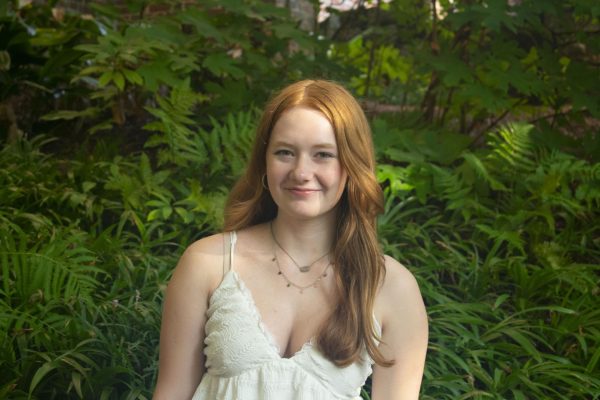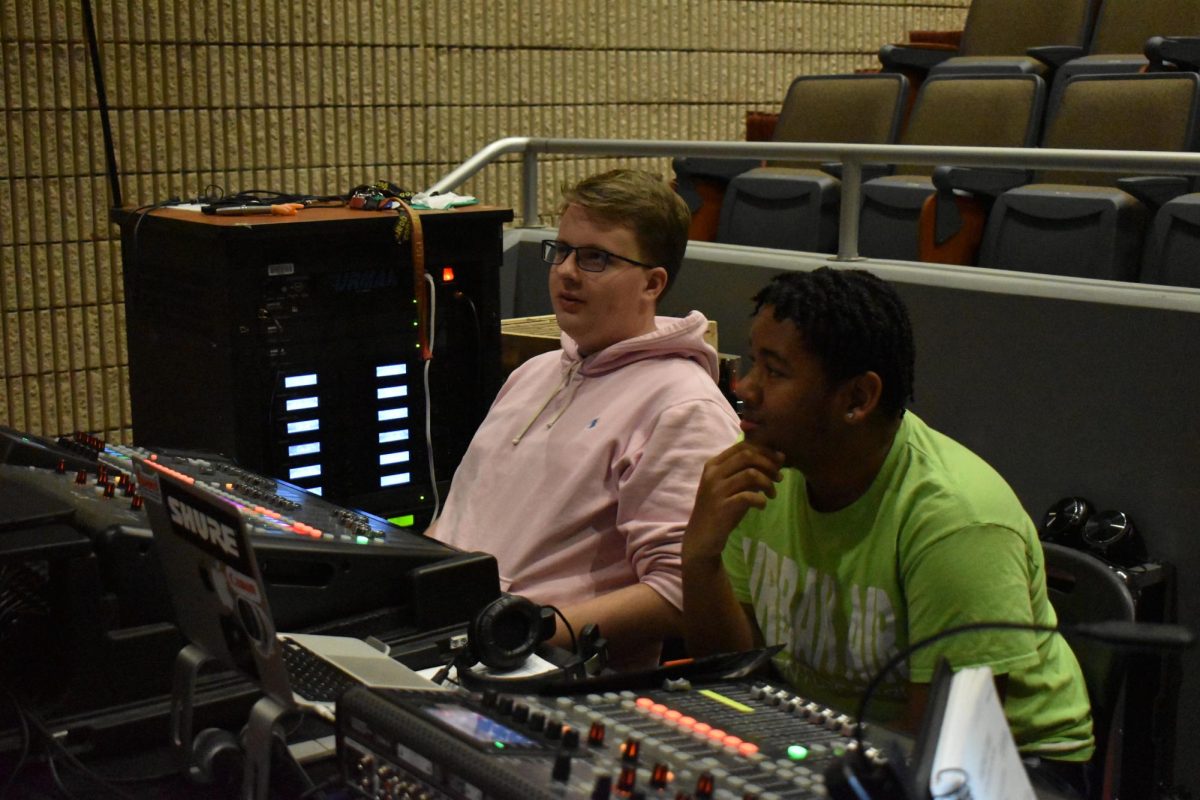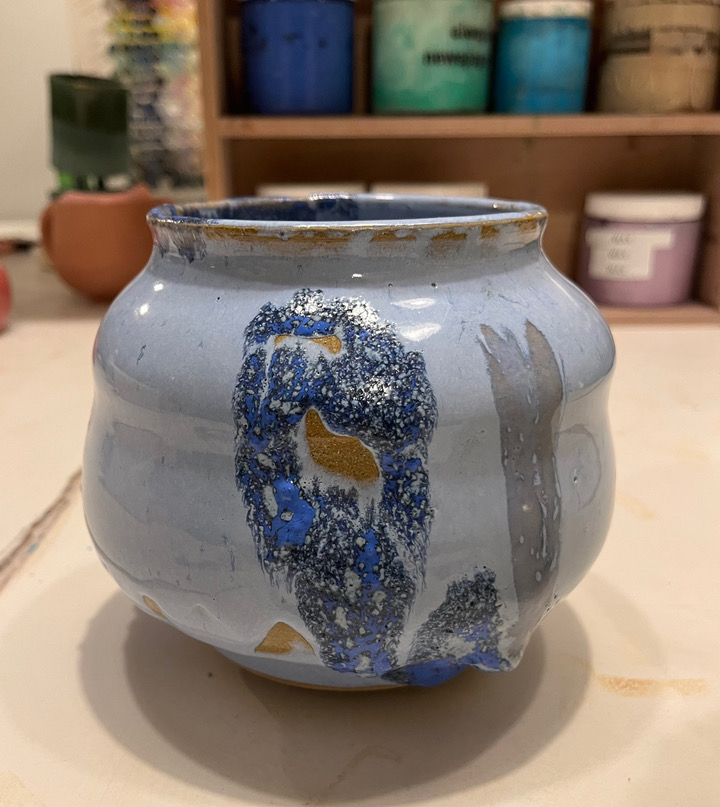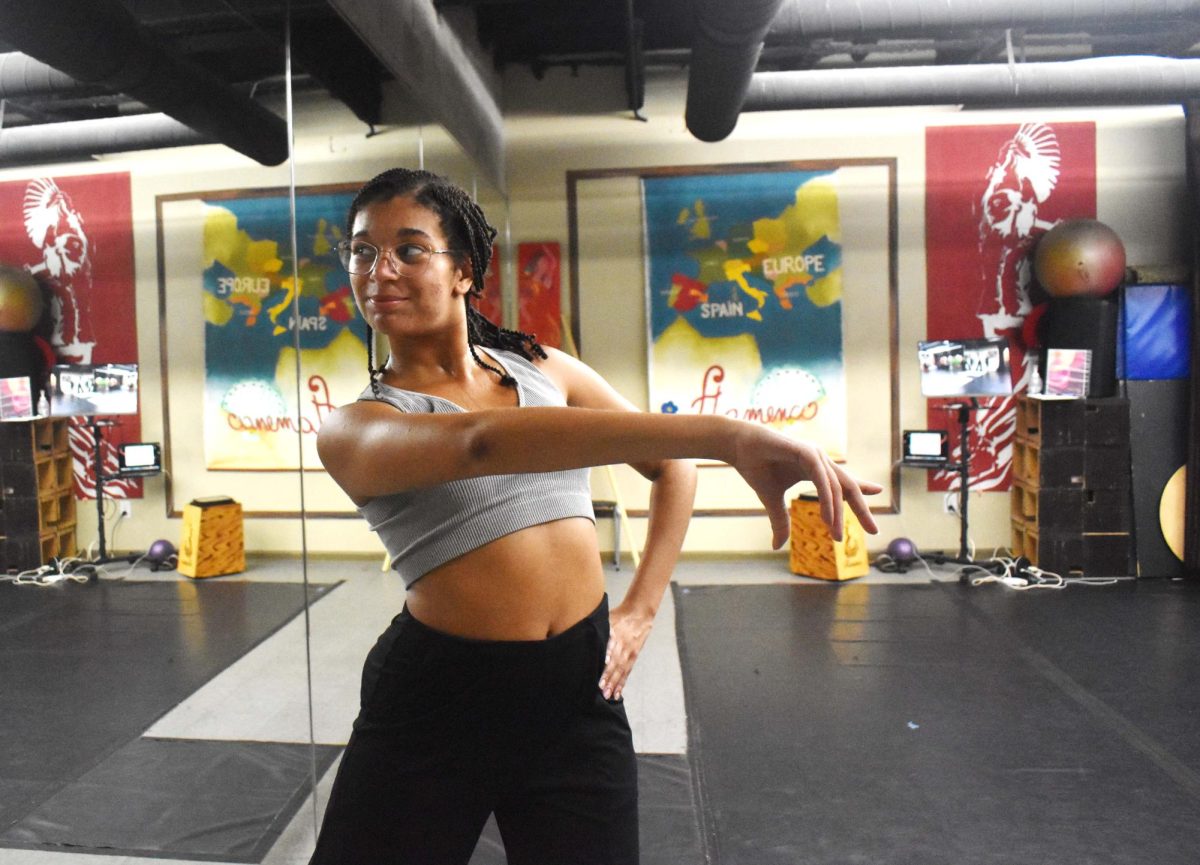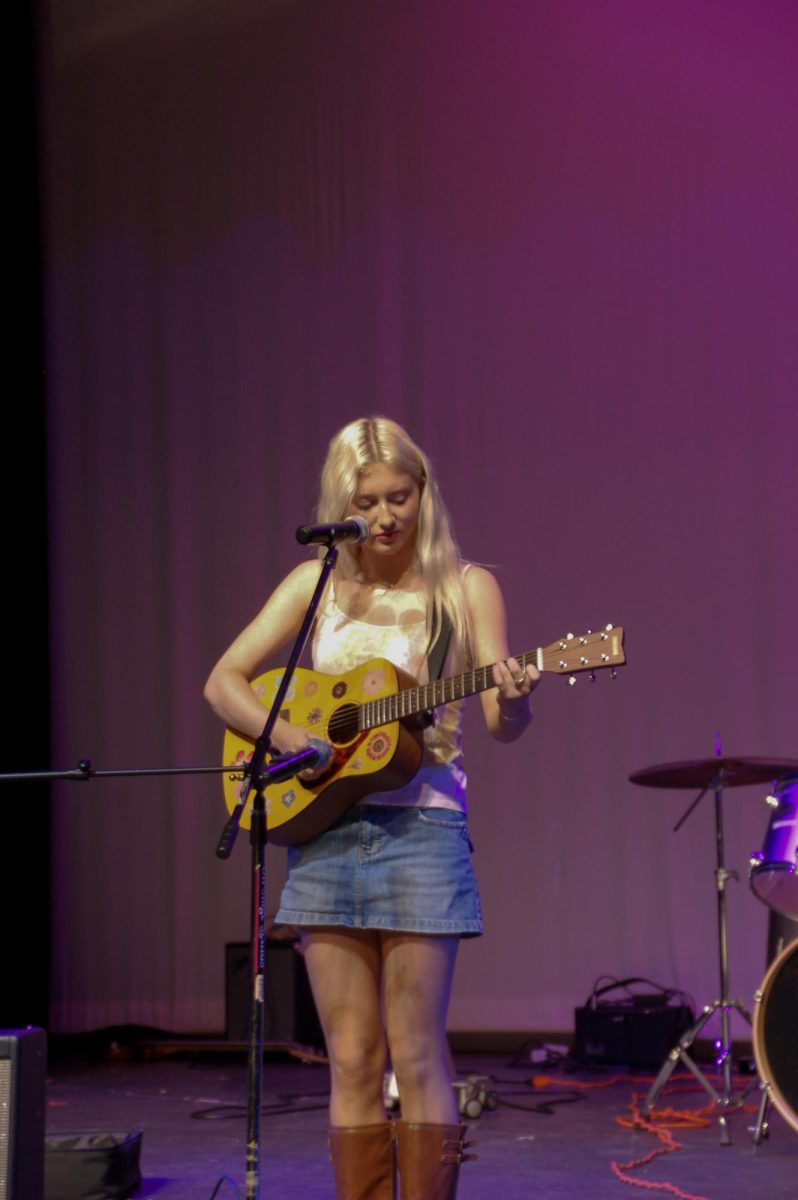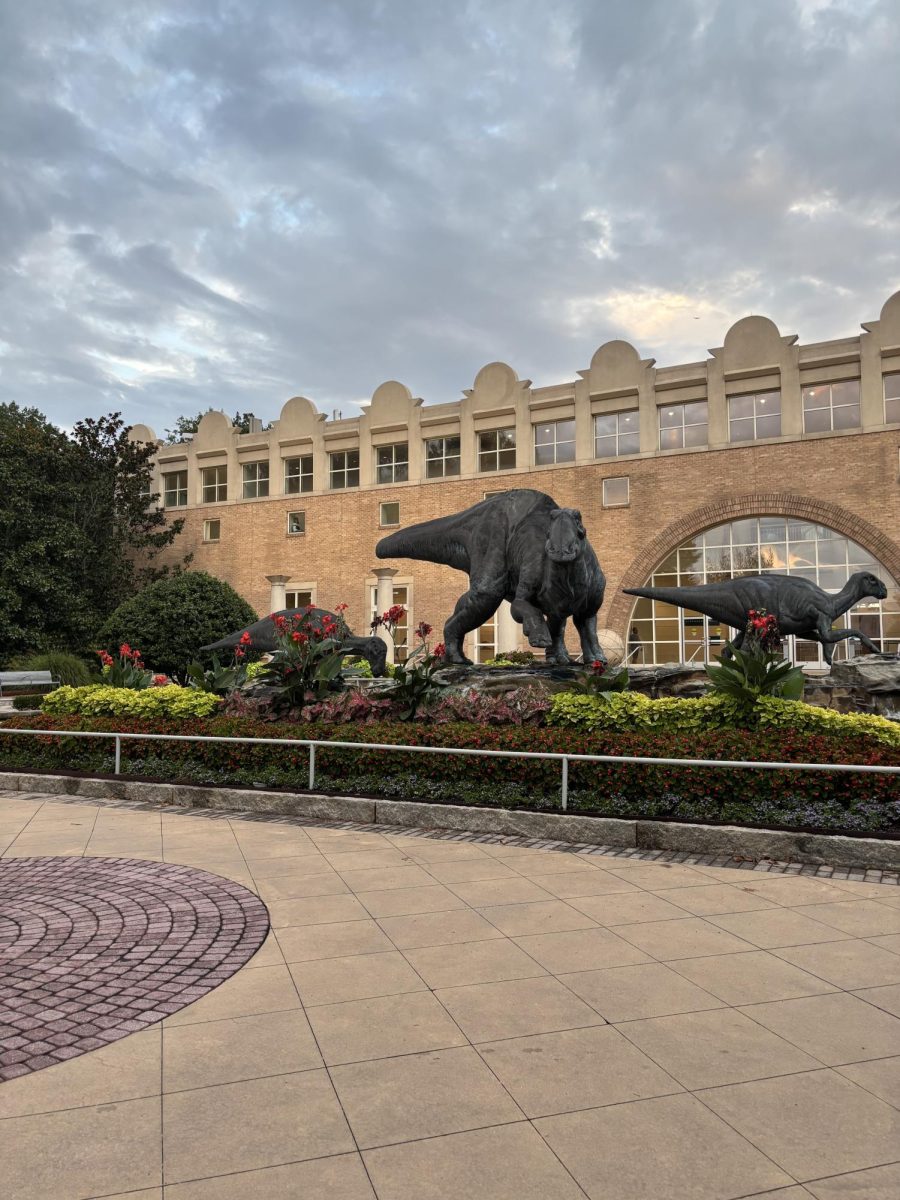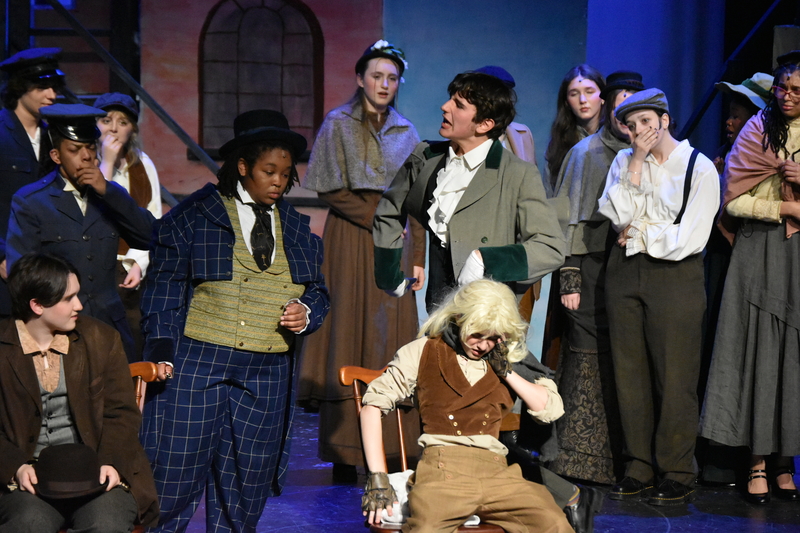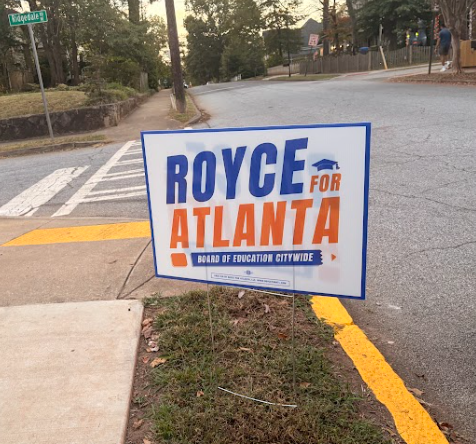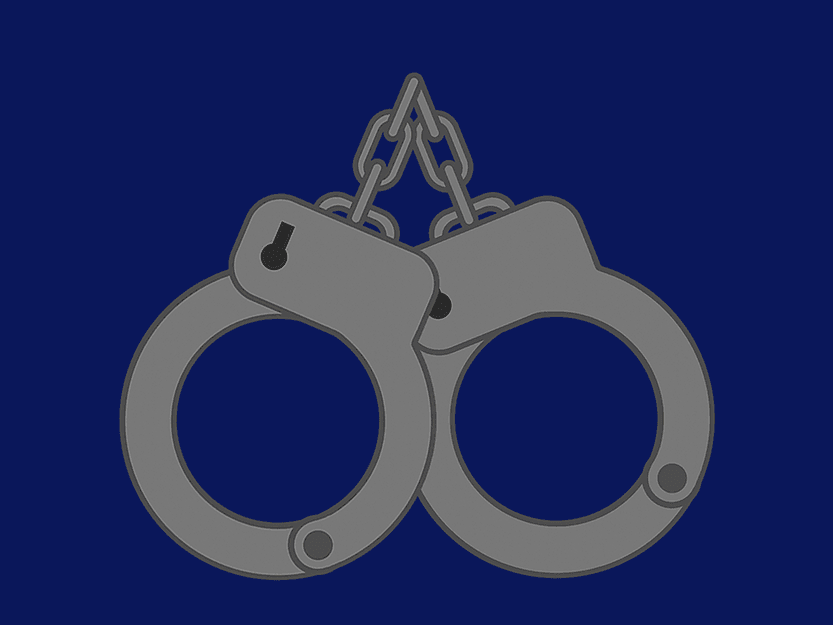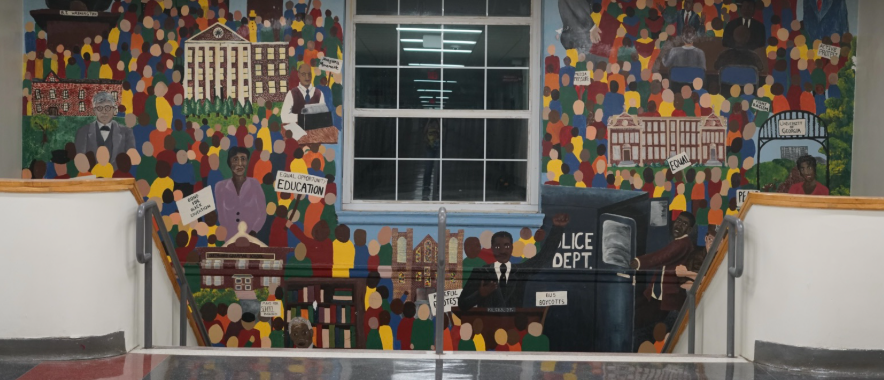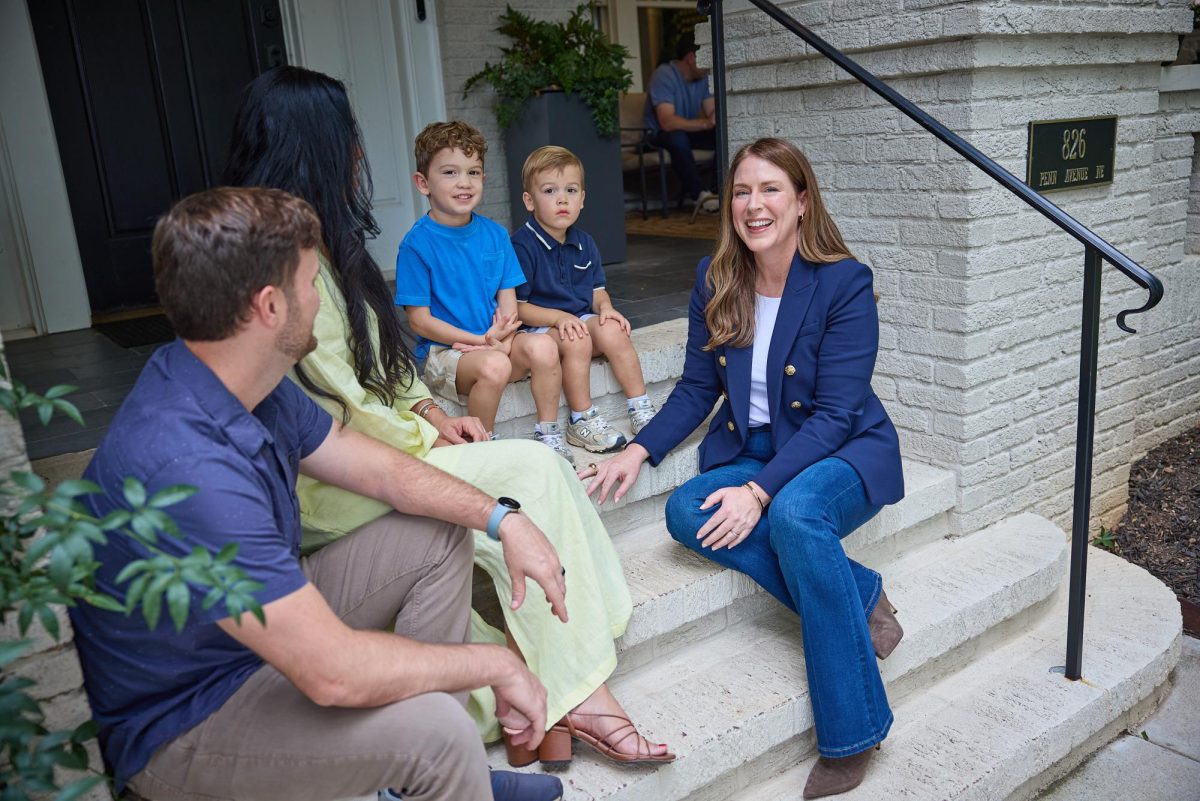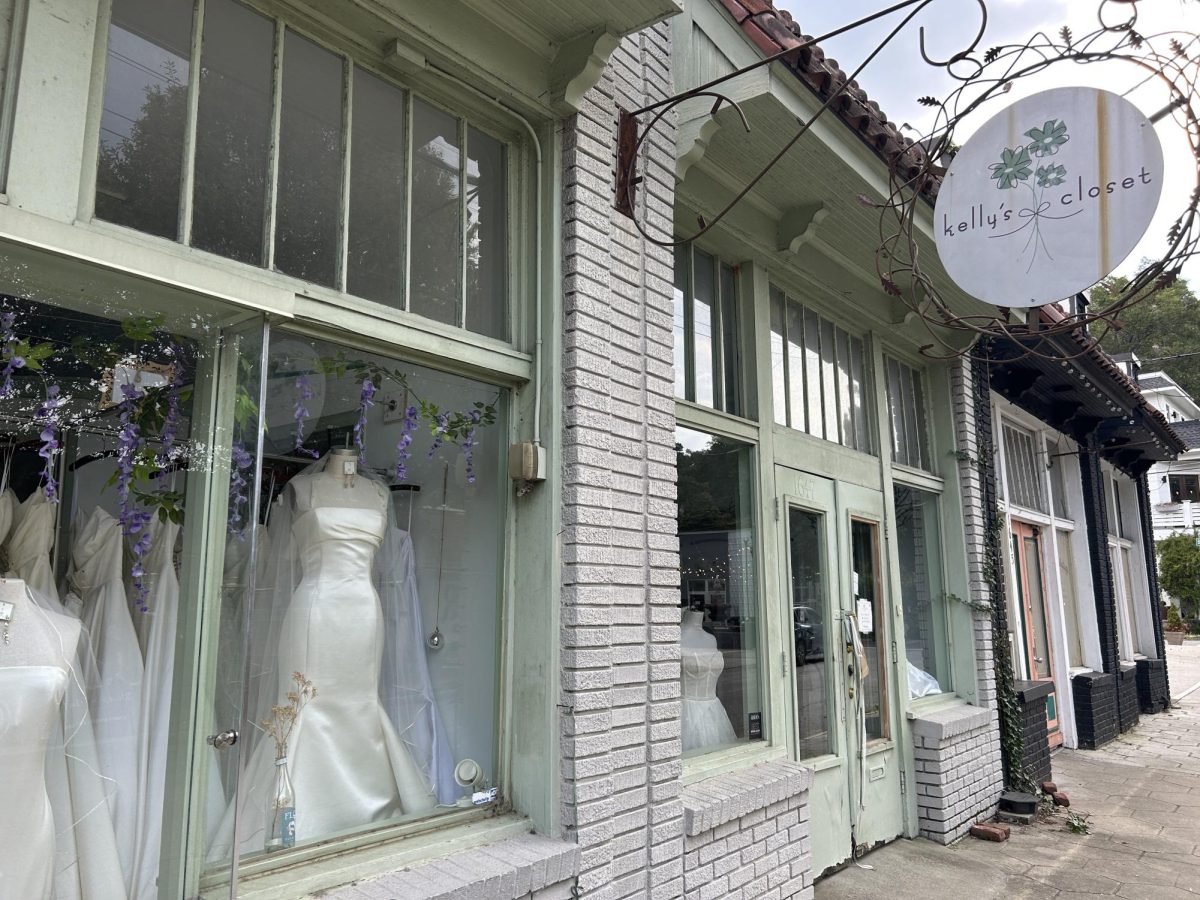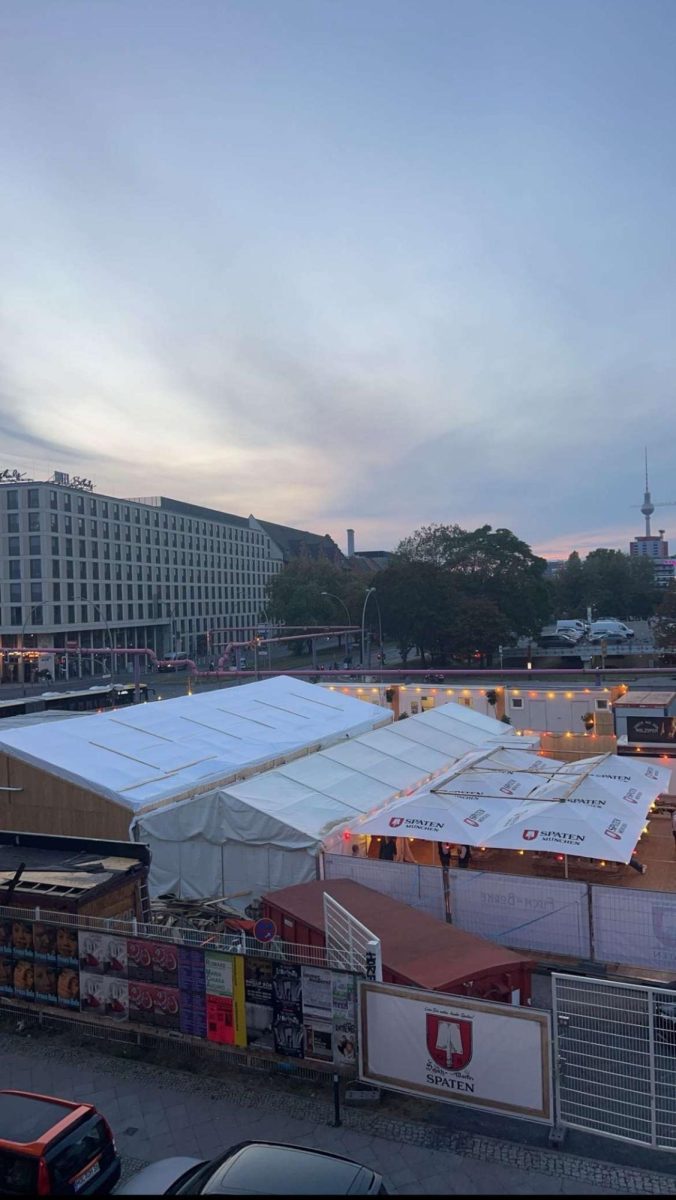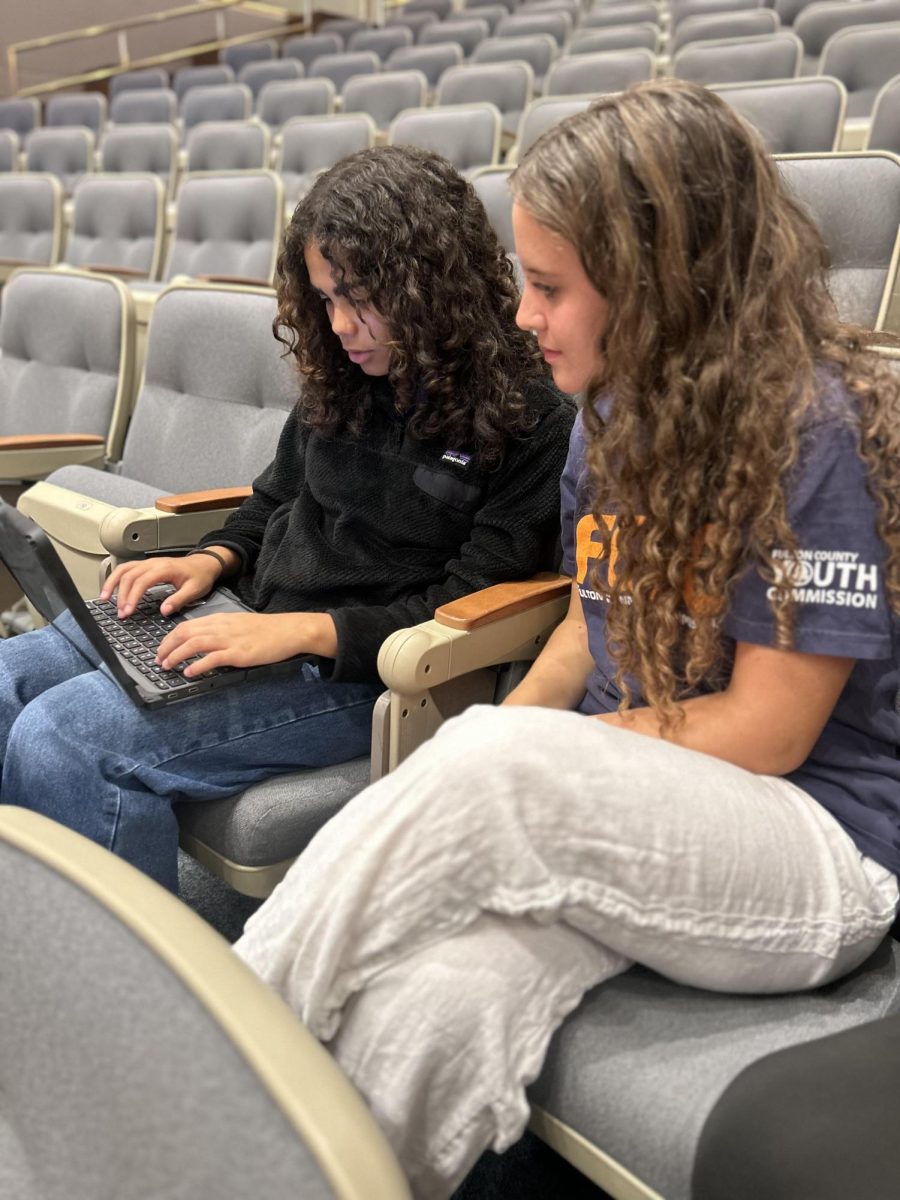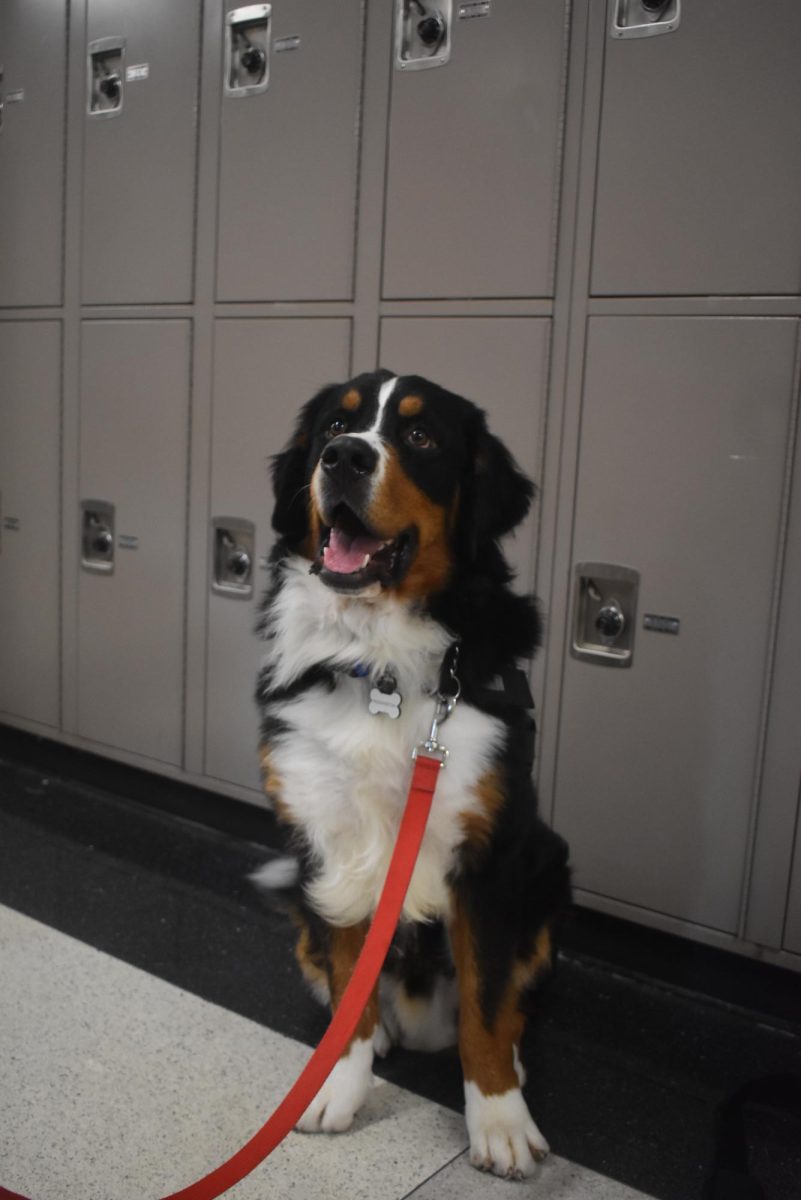Technical theatre builds connections, develops skills
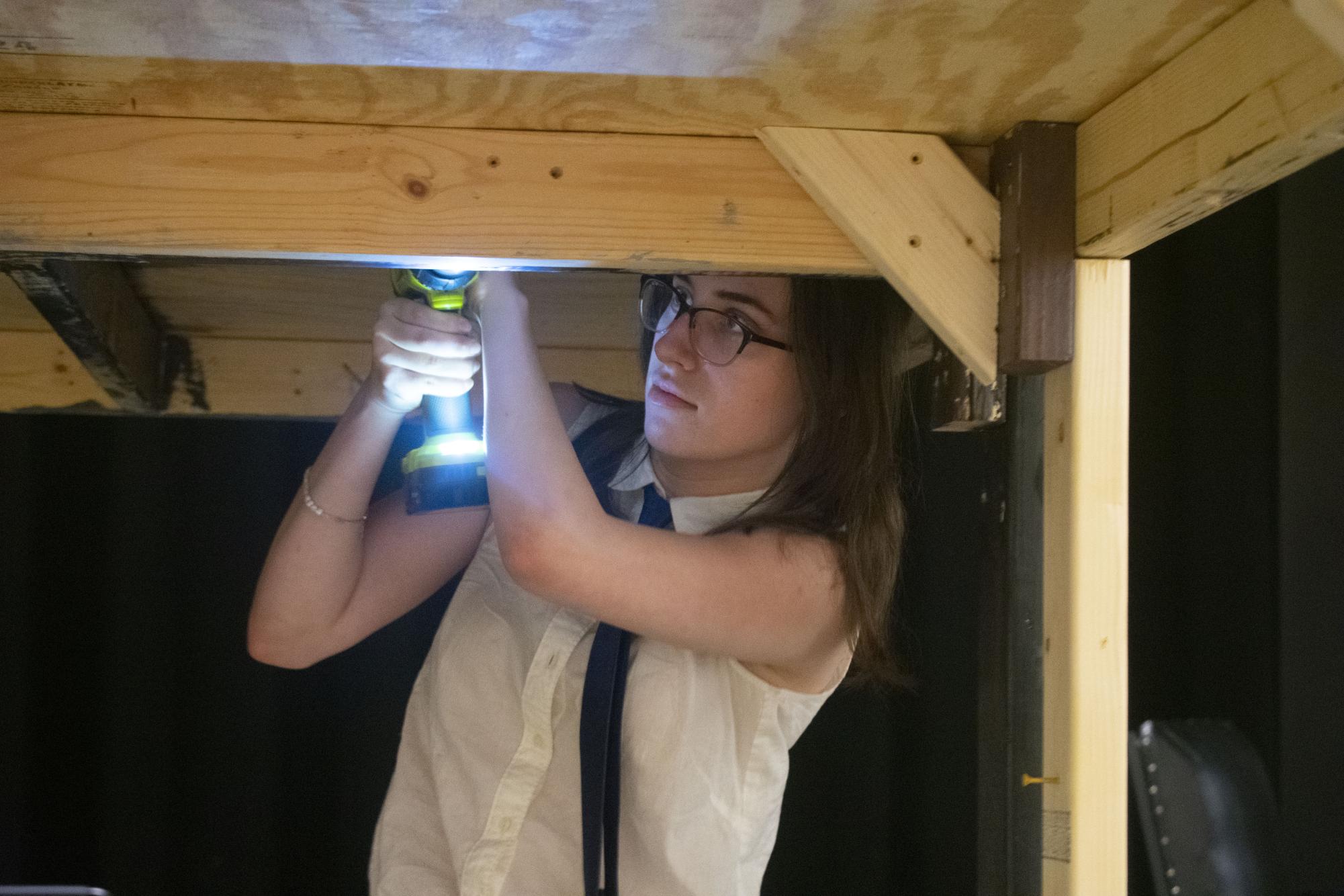
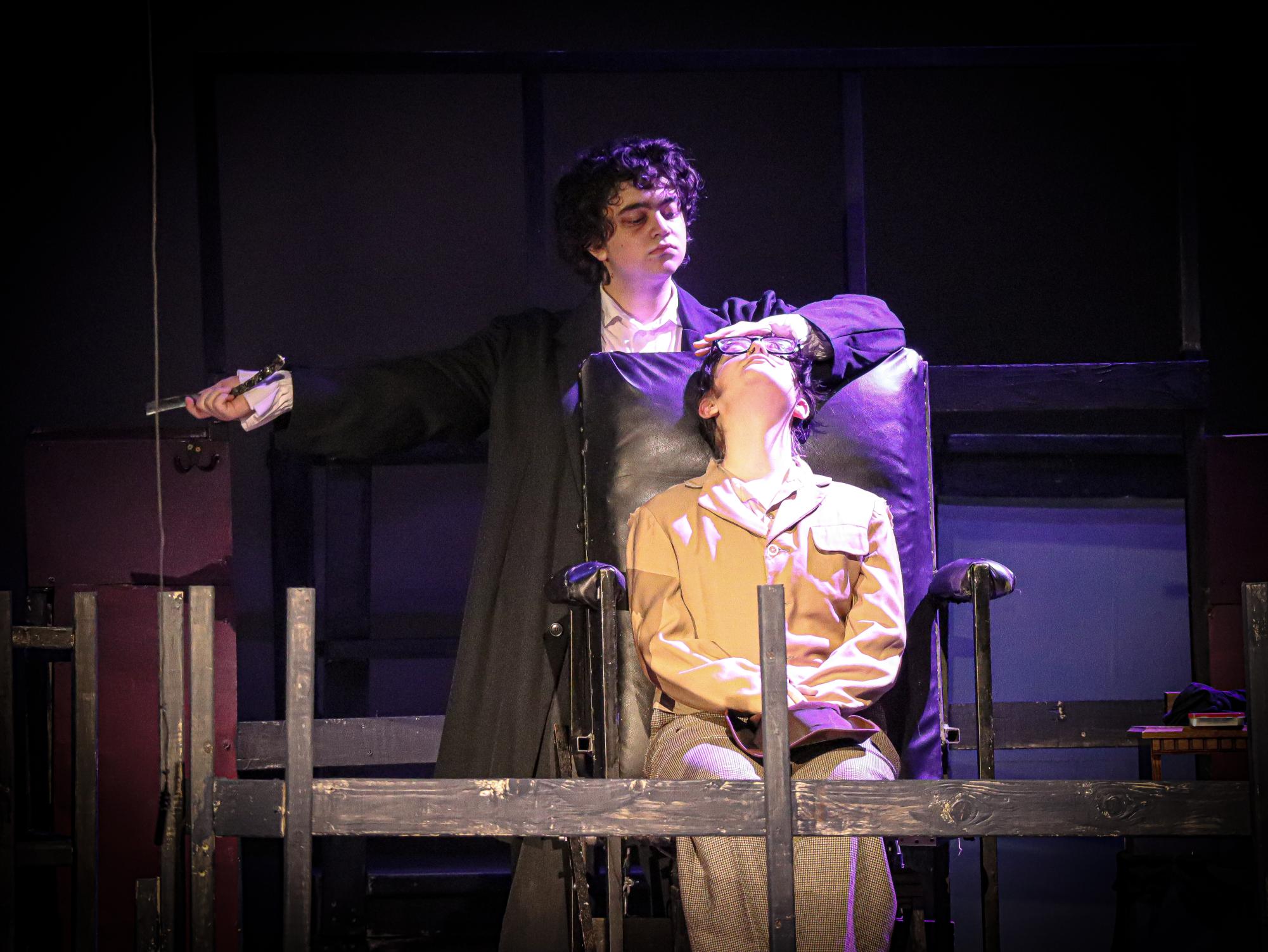
When watching a theatre performance, viewers tend to focus on the actors on stage. While they may be the most visible to the audience, there is an equally large part of theatre productions that go unnoticed. Set construction, costuming, lighting and sound are all pieces of the puzzle when putting on a show.
At Midtown, all of these technical features are run by students. They’re given the chance to direct, stage manage, build set pieces, assemble costumes, run lights and lead other students. These opportunities lead many students to pursue technical theatre in college and beyond. Theatre teacher Brooke Collins said that’s one of her favorite parts of teaching.
“It’s really interesting to me to watch how a student grows and help being part of that growth,” Collins said. “Leading them from the discovery of a talent they may not have known they had, to picking a career path, a college, a way to move forward outside of the highschool experience.”
With Advanced Drama’s Laboratory Productions (ADLABS) being added to the Advanced Drama curriculum this year, students have gotten the unique opportunity to direct their peers as actors in short plays. Senior Gale Murray directed a 30-minute scene called “Cut,” which was performed alongside two other student-directed pieces this semester. They said they have learned a lot about direction with the experience.
“It’s really great to understand some of the decisions that I may have disagreed with in the past that some of my directors have made and why certain decisions are made and why certain corners are cut,” Murray said. “From the stance of the director, there’s a limited amount of time, there’s only so much show I can put together myself in this amount of time.”
Murray said directing the show was a large time commitment despite the short length of the piece, and that it required planning outside of class to make it come together.
“I have to go home and focus and figure out what I need from my actors and what tech work I need to do,” Murray said. “Since I only had three technicians for this show, a lot of tech work was placed on myself and my wonderful tech director, [senior Audrey Winter]. I’ve also spent a lot of time at home scheduling, which is difficult for me. It’s been stressful, but I only have one core class this year, so I’ve been able to spend my time ensuring the show will be the best it can be.”
As a student directing their peers, Murray said they faced challenges in gaining the respect of other students.
“They don’t always want to listen to another student,” Murray said. “I’ve had some students that only take direction from people they see as their superior, and I’ve had some students who easily take direction and see that I have an aerial picture that they don’t have of the show. It’s been difficult telling my peers what to do as if I have some greater knowledge than them, which I don’t think I do; it’s just that I have a vision for the show that maybe doesn’t correlate with theirs.”
After directing their peers, Murray said they have gained a deeper knowledge of what makes a good director.
“I think a director needs to be personable and that they need to be good at scheduling,” Murray said. “Those are two things that I’ve learned a lot over the course of this show. How to be more personable and how to listen to what other people have to say when I don’t necessarily want their input. I’ve also learned how to schedule and work around poor scheduling.”
In Midtown productions, students run rehearsals behind the scenes, maintaining organization and scheduling so the director can focus on the big picture of the show. This job belongs to the stage manager. Senior Kinley Roberts is the stage manager for the spring musical ‘Sweeney Todd.’
“Stage managing involves helping run rehearsals and facilitating the movement of people and more bureaucratic stuff while the director is mostly facilitating the vision and what they want everything to look like,” Roberts said. “It entails a lot of communication with actors on what time they need to be there, what they’re going to rehearse and scheduling conflicts.”
As a stage manager, Roberts manages the attendance of actors at rehearsals and is in charge of handling scheduling conflicts. In order to do this well, Roberts said they believe that specific skills are required.
“A stage manager needs to be good at leadership and communication,¨ Roberts said. “Those are the two things that you have to deal with the most, being able to lead large groups of people and getting information out in a way that makes sense to everyone with no confusion. I think leadership comes with confidence and experience, learning to trust yourself and your team. I put a lot of trust in my assistant stage managers, which is really important, and learning what ways work best to get out information to a bunch of people.”
While stage management requires great amounts of work, Roberts said they enjoy the process of a show coming together.
“My favorite part of stage management is watching the process from start to end,” Roberts said. “There’s very few people who get to see the true, full aspects of the production other than the director, so being there from the first read through watching the actors make their choices and gel together as a cast through seeing the tech elements come in is really fun. You get to watch the piece grow over time.”
For this year’s spring musical, ‘Sweeney Todd,’ a new technical leadership position has been created: musical director. Junior Zoe Diamond-Wilding is taking on the role, assisting the musical director, chorus teacher Kevin Hill, in multiple ways. One of these, includes running Simfonia, a program that allows the user to play accompaniment along with what’s happening on stage, taking more or less time depending on the length of lines and pauses.
“I run rehearsals on Wednesdays when Mr. Hill isn’t here, and I help support him with sectionals,” Diamond-Wilding said. “Then, I also run the Simfonia program for the accompaniment.”
Diamond-Wilding said they believed the job was needed, especially due to “Sweeney Todd’s” challenging musical requirements.
“For our spring musical last year, I had a similar position, unofficially,¨ Diamond-Wilding said. ¨Mr. Hill would have to leave vocal rehearsal at 5, and I would continue running the rehearsal for the remaining hour. I don’t think it’s too different from that, but it’s definitely allowed for more independence and more productive sectionals at rehearsals.”
In a technical leadership position, Diamond-Wilding said directing other students can be difficult, but they have found skills that have been effective in managing behavior.
“I think having some leadership qualities is important,” Diamond-Wilding said. “You also have to be able to be kind and compassionate to people while getting them to listen.”
While there are many jobs centered around the actors in a show, there are even more centered around the technical aspects of a show, such as lights, sets and costumes. The manager of the technical design and construction in a show is the tech director. In the musical “Sweeney Todd,” this position is held by junior Marissa Rainey.
“I bridge a lot of communication gaps between stage manager and director and our crew,” Rainey said. “It’s not like Dreiling has the time to come in and tell us things or like [Roberts] has time to tell us that a set piece moves in a specific piece of blocking, so I do a lot of that communication. I’m also kind of like a project manager for them. It’s not just set, it’s all of tech, lights, sounds, costumes. I help keep everyone on track and make sure that things get done.”
In “Sweeney Todd” specifically, there are a lot of challenging technical aspects to cover. Rainey said the most difficult thing to figure out was the character Todd’s barber chair trapdoor, which had to safely appear as though his customers were being dropped through a chute leading to an oven.
“[The trapdoor] was a hard thing to figure out, and it’s still a little scary operating it,” Rainey said. “But there’s also things like a lot of high up platforms and a caravan with wheels, which I’ve never built anything like before. There’s this tall platform for Johanna that has a big metal ladder we had to install. There’s a lot of things that are new and different that I’ve never done before, which comes with most shows.”
In regards to technical direction, Rainey said the job is similar to other tech leadership positions; Communication and organization are key.
“You need to have people skills,” Rainey said. “It’s hard leading people your age or older than you. You need to be able to talk to people and communicate well. You also need to be organized because understanding the scope of everything happening or managing multiple things that need to happen is a big part of what you do every day.”
Another important aspect of technical theatre is lighting. The lights can completely change the mood of a show and provide context as to when and where different scenes take place. The lighting director for “Sweeney Todd” is senior Nate Kirkland.
“Light can affect the mood a lot, the shade of light we use and how big it is,” Kirkland said. “For example, if we want someone to feel alone or isolated, we use cooler light and a smaller light while darkening everything around them. We’ve used that a lot. Or, if we want to make the setting feel crazier we can make lights spin or put on some effects that unsettle the audience.”
Being the lighting director entails not only managing the light cues for the show, but also teaching others how to operate them.
“I manage a team of five other lighting people and delegate responsibilities, come in and check on them, and teach them the skills of lights,” Kirkland said. “I’m a senior; so, I’ll be graduating this year, and I need to teach people how to use the light board, all the intricacies of lights, the connections, power, all the things. So, it’s mostly teaching, and it’s also making sure the lights look good.”
According to Kirkland, when it comes to making lighting decisions, there are many things to consider and places to take inspiration from to create original lighting cues for every show.
“A lot of decisions are fueled by talking with the director, how the set looks, and all the design ideas,” Kirkland said. “So, for Sweeney Todd, it’s very dark. The setting is a dark environment; there’s a bunch of smog in the air, so the lights are gonna be dimmer, and we’ll have a lot of darkness overall compared to some of our other shows, which maybe have happy, pure settings. It’s a lot about reading up on the musical, reading up on what the director wants, what the original director wanted, and taking inspiration from things like the original production.”
After the lengthy process of designing the lights for a show and putting in the cues, Kirkland said he enjoys getting to watch the performance at the end.
“My favorite part of the job is when it’s done,” Kirkland said. “When we can finally just sit back and run the show, and you know all of the cues in the back of your head, and you can just watch it all play out and get that perfect show where all the lights go according to plan, and they all look really good.”
